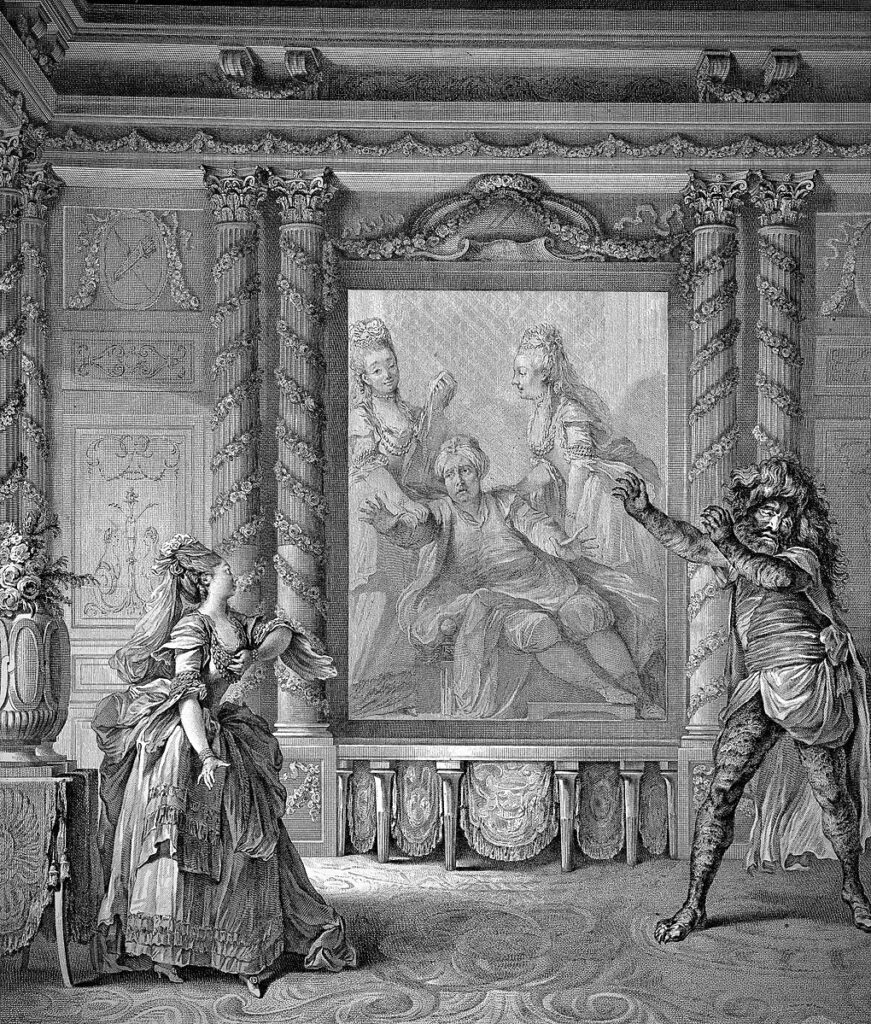(Jean François Marmontel and André Modeste Grétry, 1771)
Zémire: Let me see my sisters and father again.
Azor: As far as I can I will obey. They will appear here in the picture. But if you come near, everything will vanish.
Zémire: Alas! How sad he is…He is seeking me out with his eyes. It is as if he is speaking to me. His arms seem to reach out to me. Ah! If I could fly to you! If only he could hear me!
Azor: It is impossible.
Zémire: And can I not hear him?
Azor: Ah, Zémire! What do you demand of me?
Zémire: You would refuse what I desire?
Azor: No, but I am sure, alas, that in obeying you I will betray myself. Their tears will render me odious, I know. But you wish it; I love you. You will hear their voices.

